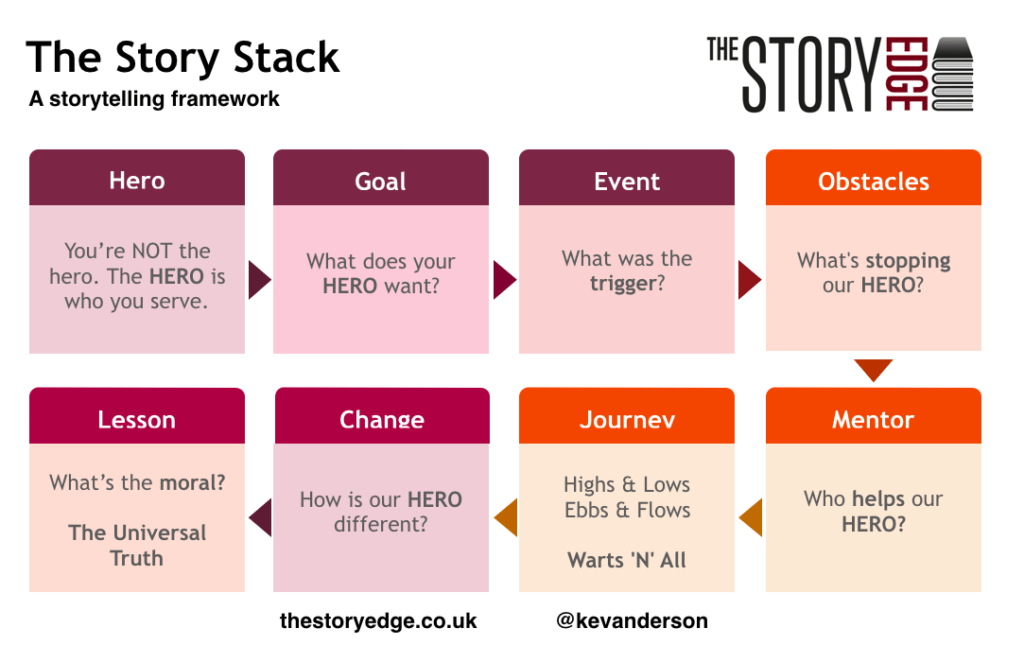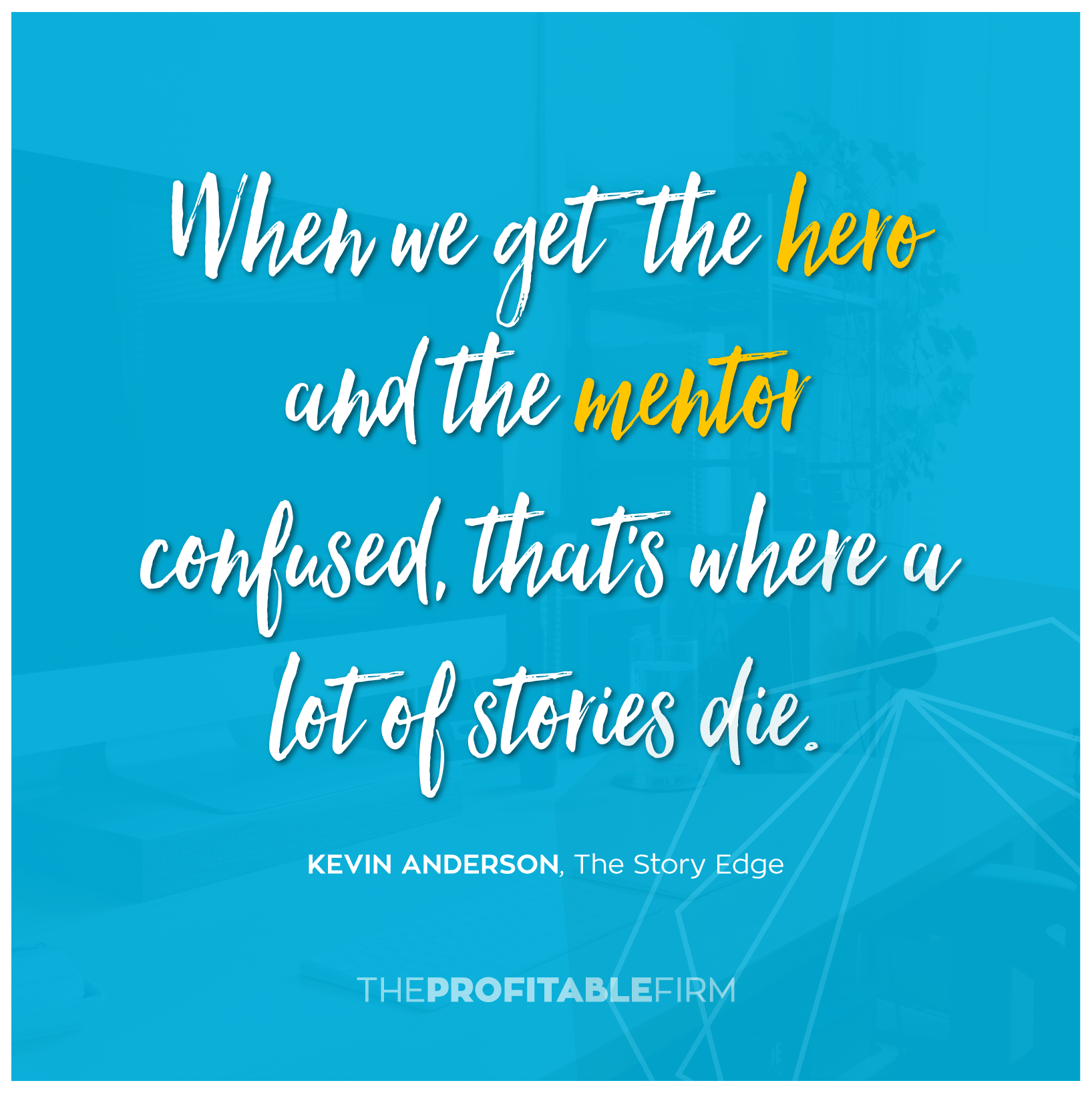
“Accountants are not natural communicators.”
Would you say that is true for yourself?
In my experience working with accountants, you are excellent communicators. You have a great rapport with your clients, and when you talk to me and tell me stories about what work you’ve done, it’s fascinating to listen to.
But then we put you in front of a video camera, or give you the tools to write a blog post, and suddenly you go blank. Frozen. Nothing to say. “I’m not really a good communicator”, you say.
When it comes to the case studies you have to share, the raw material is powerful. Emotional. Moving.
You’ve told me stories of people who were about to lose the family farm, which had been held for generations, and you literally saved the day. Couples who were about to go through a divorce due to financial strain and the relationship was brought back together thanks to the work you did with them. Businesses that would have failed, mergers that would never have happened, lives kept from the brink of rack and ruin.
None of this is an exaggeration in the slightest. As a matter of fact, I’ve probably downplayed those stories a bit in the above examples.
So it seems to me that it’s your impression of yourself as accountants that is off.
You think you’re not natural communicators, that it’s hard to tell a story, that you aren’t creative. But you are – and our job at the Profitable Firm is to draw that out by means of your marketing.
Recently we asked Kev Anderson, Founder of the Story Edge, to give a training to the whole Profitable Firm team on this concept of storytelling. It’s more important than ever for your accountancy firm to use stories in your marketing, and we want to ensure that our team is educated and inspired on this so we can help you do it better.
What he shared with us was the 8-step framework for building a good story. Whether you use it to develop a case study, a testimonial, or something else, it will give you the structure you need – and more importantly, the impact that your clients and prospects want – so that you get the best results possible from that story.
(Also, Kevin is joining us as the guest speaker on an upcoming webinar – register now to hear him live and in person!)
First, here are a few principles of storytelling for your accounting business:
We’re natural storytellers – all of us.
When sitting around the dinner table, or out with friends at the pub, it’s so easy to tell a story. It comes naturally, we wave our arms about, everyone laughs, sometimes people cry (hopefully appropriately so from a moving story, and not because we’ve made them upset). Why does this disappear when it’s time to tell a “business story”? Often it’s because we are thinking of ourselves, and not of the purpose of the story.
You are the best storyteller of all.
No one can tell a story like you can: because you lived it, were part of it, and experienced it. With a little guidance you can do it very well – the key is to get that ugly first draft done and then get a little help to make it sparkle, make it magic, get it the best it possibly can be.
“When it comes to content marketing,” says Kev, “there is good content and there is bad content and there is also awful content! You have to put your heart and soul into the content so people feel it.”
You must allow people to see who you really are.
This is particularly challenging for accountants. Many of you have built your business in a day and time when there was “business” and there was “personal”.
It’s not that there was a line between them: no, there was a great wall of China, with sentries posted every fifty feet, between business and personal. (I borrowed some of that from the tv show Dr House, by the way. He tells a great story.)
That kind of ‘business’ doesn’t work anymore. Your prospects want to see you. Know you. Understand how you work. Connect with you. Click with you – or not! Remember that you don’t want every single prospect to say yes. (You really don’t, despite your joking about how you’ll take any client who is ready to pay.) You want the best, the dream clients, those who will listen to your advice and respect it and act upon it. In order for that to happen, you’ve got to open up and be yourself.
So, how do you move past the barriers and share the stories that matter, so people do want to engage with your accountancy firm?
Great news: we’ve got a framework to help you.
Accountants love structure. It’s part of what makes you brilliant at what you do, and causes us rambling, “shiny object syndrome” business owners and entrepreneurs to respect you and appreciate your skills of organising us and our finances into some semblance of order.
So here’s the framework, and we encourage you to use it to take a real story, and craft it in a way that your prospects will want to engage with your firm.

1. HERO:
The hero is not you the accountant. It’s your client, the person you serve and support.
Always remember this when writing or sharing case studies. If you make it about you, it feels sales-y. If you make it about them, it’s a great story that they can connect with.
2. GOAL:
The hero wants something. They have an objective (for example, they want to pay less tax).
They might have had that notion for a while – “I think I’m paying too much tax”, but haven’t done anything with it.
3. EVENT:
Something happens that’s a trigger.
To use our previous example, this person has now moved into a new tax bracket and as a result their business or their life is in crisis.
It’s best to use a real person – even more so than a specific company name. As Kev said, if we say that “A&A Holdings had a problem” – did they really, or was it that David the owner couldn’t sleep at night?
There’s a real issue amongst accountants saying “Oh, we can’t name our client, they won’t want to be named”. We’ll take about privacy in a moment, but remember that case studies which are faceless and nameless have no heart and soul, no personality, and nobody to care about. I don’t care about A&A holdings but I care about David the owner. Remember that you are helping them to connect with the real person who has a real problem in their life.
First, please ask your client if it’s okay to use their name. Nine times out of ten they will say yes (especially when you say you’re going to feature them on your website, share them on social media, and in doing so promote their business everywhere for them at no cost).
Secondly, if you really, really have to protect the client for reasons of privacy, you can still tell the story. When you do this, you must be clear by stating at the end that “the story is true, but the specific name of the person has been changed for privacy reasons or at their own request”. That shows that you are sensitive to this situation, but the story is still compelling. If the story is good enough you can still get it across without the name…but a real name is always better.
4. OBSTACLES:
What’s stopping our hero? Why couldn’t this person solve it himself?
Share specifically what happened that caused a real issue in the life of your hero. Were they prevented by…
- Lack of knowledge
- Financial issues
- No time
- Fear
- Something else?
The story Kev shared on our training had all of us in stitches. He was telling us about one of the first videos he shot – all about storytelling, very professional, very business-focused…and then he noticed in reviewing the video that his son’s pants were hanging on the radiator behind him. (For our USA clients, that’s not trousers, by the way.)
It was then that Kev realised he needed a little assistance with video editing.
This kind of obstacle is something we can connect with, laugh at, see our own story in. How many times have we done something foolish or embarrassing or frustrating? We connect with Kev. He’s our kind of guy.
5. MENTOR:
Who helps our hero? Naturally, the mentor is you, the accountant.
But this is where a lot of stories go wrong. They take a complete about turn. It was about the hero, but now it’s all about us. Let’s tell the world how brilliant we are.
The focus needs to stick as much as possible with the hero. Be understated, a little humble, a little modest and let the hero drive the story.
6. JOURNEY:
Highs and lows, ebbs and flows, warts & all. The worst thing you can do is tell a perfect story.
An example of a bad case study is one in which your prospect feels that you’re trying to sell to them. They have to be real.
Kev said, “I have never yet worked on a project that has gone perfectly well. Instead of building trust a ‘perfect’ case study reduces it, because I don’t believe that story is true.”
The heart of a story is about the highs and lows – where did that client almost go wrong? Where did they try something that didn’t quite work? How did they recover? Share the real story because people will go on that story with you – they’ll care and connect and remember the story.
7. CHANGE:
Our hero is different. If there’s no change, there’s really no story at all.
In the tax bracket example, now this guy has been supported, you’ve figured it out and found a way to manage the situation. He’s more relaxed, his money is protected, he’s happier.
8. LESSON:
What’s the moral, the universal truth?
Now we have the opportunity to help them understand what they take from this story. Is it that the earlier you speak to your tax planner the better? Or that moving up a tax bracket is really not that big of a deal?
You can leave the lesson understated, so the reader sees it for themselves, or you can make it very specific.
Here’s the most important thing I (and Kev) want to share with you about this framework.
It’s not a formula.
You don’t take those 8 steps we’ve shared, and sit down and write 14 case studies that are exactly the same.
This is where the creativity comes in.
You can change it. Pull pieces around, talk about the lesson first, or explain the trigger event from the outset. If you use it as a formula, every story would be the same.
The key is to ask, “Where is the heart of the story?” Where is the emotional driver that’s going to get people connected straight away?
Once they’ve read the title or subject line and the first paragraph they’ll decide whether they spend time with this.
The more you work with this framework, the higher your confidence level will be in your own accounting firm and in your marketing, because these stories give you a great deal of confidence.
When someone asks what you do, you can answer with a story. But make sure to be very clear about who the hero is, and who the mentor is. The hero will sell the story every single time.
Kev, you’re our hero today: thanks for an amazing training that helped us see how we can share stories better!

